Deep Graves (which I sometimes write as DEEP GRAVES), is the working title of my RPG Maker 2003 game, which I’ve been developing for about a year, now.
This post will serve as a proper introduction to the project, since my previous post was more of a general introduction to the engine I’m using (RPG Maker 2003).
Please note that everything in this post is subject to change. All things considered, I’m still in the early stages of development, and this is a very chaotic time for development.
Story elements, visual elements, and level design, all change frequently, suddenly, and drastically.
General Introductions
If, somehow, you’re already interested in following the release of my game, and don’t need to be convinced by this post, here is a link to my rpgmaker.net profile.
You can expect to see the game uploaded there (for free) once it’s complete.
The Name
Like I said at the start of this post, “Deep Graves” is the working title for my game.
Structurally, the name was inspired by the paired monosyllabic arrangement of the words “Dark Souls,” a video game series that has been a consistent source of inspiration throughout my artistic journey – especially as a game developer.
Original Game Concept
Initially, the title was based upon my original game concept, which followed the journey of a “Grave Digger,” as they traversed a set of catacombs whose depth was ever increasing. Hence, they traveled through “Deep Graves.”
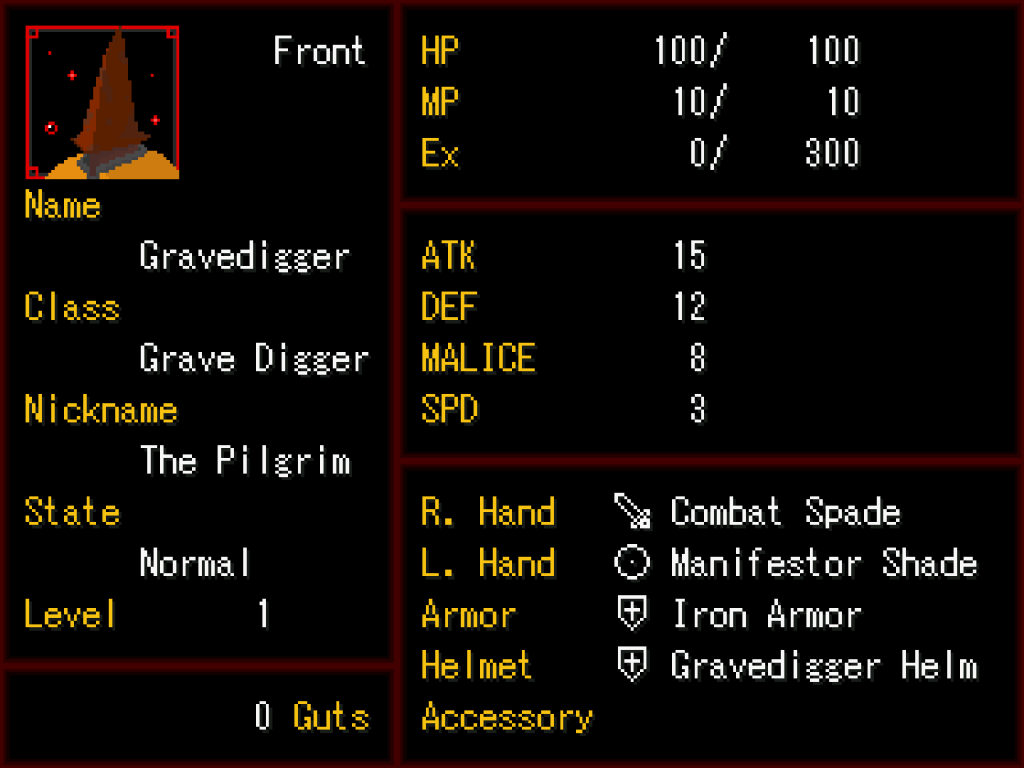
a screenshot of the Gravedigger‘s status screen.
the Gravedigger is one of the playable characters in Deep Graves, and serves as the main character of the game.
Although elements of this original concept have persisted throughout the development process – namely the Gravedigger, who remains the main character – very few of these design elements are present in the game’s current state.
The title, for example, is much less literal, now.
Simply put, I came to realize that designing underground environments was creatively restricting. To be fair, there’s a lot you can do with underground environments if you’re creative enough, but I found that crafting an interesting atmosphere was more effort than it was worth.
The Story
This is, quite frankly, not an area of the game I can discuss in-depth. There’s a couple reasons for this.
For one, like I said in the introduction to this post, the game is still far from complete.
The lore (history, and events preceding the gameplay experience) and plot (the part of the game players will experience, i.e. the ‘storyline’) are far from complete, and much like other areas of the game’s design, subject to change.
I’m not especially comfortable talking about elements of the story which are incomplete. Much of this game’s story is also very personal to me, and I’m not ready to share it, just yet.
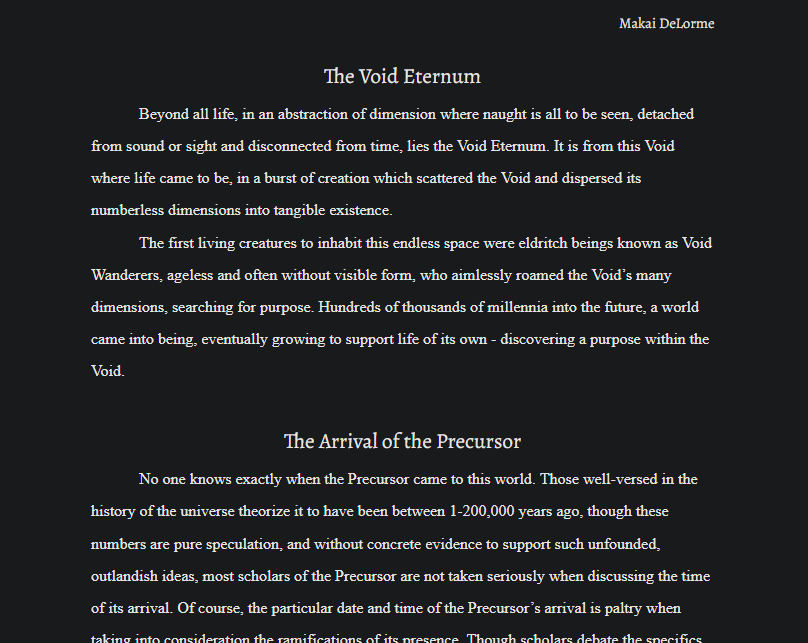
a link to the full (3 page) excerpt shown here can be found at the bottom of this section
The more important reason, however, is the fact that I want to avoid spoiling elements of my story before anyone has had a chance to play the game, and experience it themselves.
One of my design goals is to deliver my story through gameplay, so giving away important story elements would, aside from being anticlimactic, defeat the purpose of my game’s design.
If you’re really that interested in reading some of what I’ve written, I’ve provided a link below to a Google Doc containing a very small portion of the foundational lore and worldbuilding elements.
Engine and Genre
As discussed in my previous post, Deep Graves is a JRPG developed in RPG Maker 2003.
Now, my use of the term JRPG may cause some confusion, since the acronym technically stands for “Japanese Role Playing Game.” As I’m sure most of you know by now, I am not Japanese.
To clarify, I use this term to describe traditional turn-based RPGs, visually comparable to the classic Final Fantasy games – generally Final Fantasy 1 – 6.
“Traditional” is relative to video games, in this case. In a broader scope, I’d argue that a true traditional RPG would be something like Dungeons & Dragons.
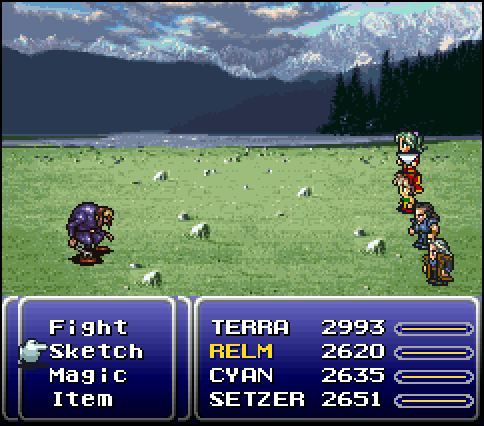
a screenshot of Final Fantasy 6‘s battle screen (Final Fantasy VI).
This use of the JRPG acronym may not be perfectly accurate, but I find that “JRPG” is much easier on the eyes, and easier to say than “TBRPG,” which is an acronym that I’ve never seen used in conversation, and may be confused with “Text-Based RPG.”
Plus, I’m not the only person who defines the JRPG genre so broadly.
For all intents and purposes, the term JRPG refers to turn-based role playing games whose gameplay styles could be considered comparable to classic, traditional RPG video games like Dragon Quest, and the Final Fantasy series.
“JRPGs are Boring”
the first 3 seconds of this videogamedunkey video says it all
This is a relatively common sentiment among gamers, and it’s one that I actually agree with, in many cases.
My Criticisms of the Genre
Unfortunately, many of the conventions of the JRPG genre have tainted perceptions of the genre as a whole. Like I said, I’ve my own criticisms of the genre, so I figured I’d briefly list a few of them here.
“Tell, Don’t Show”
To be perfectly fair, this is not a problem unique to the JRPG genre.
That said, JRPGs often put a great deal of emphasis on dialogue, which, aside from being mind-numbingly boring in some cases, can lead to the mistake of talking about things, rather than showing them to the player through gameplay.
This can evolve into one of my most deadly ‘gaming sins,’ something I (and many others) refer to as, “Win in the Fight, Lose in the Cutscene.”
as seen in this clip, videogamedunkey defeats Mòrag, only for them to defeat his character in the cutscene after the boss fight.
The same thing happens at 4:31.
Obviously, this is the dumbest thing ever.
Again, this is not a problem unique to JRPGs, but it relates closely to the concept of “Tell, Don’t Show,” where, rather than showing you how tough a character is – by making their fight mechanically challenging and interesting – they opt to just talk about it, instead.
Repetitive, Unsatisfying Gameplay
By virtue of their turn-based gameplay, JRPGs require a bit of patience.
That is, you must wait for your turn to finish once you’ve selected actions for your party members, and you must wait for the enemy’s turn to finish as well.
If your combat isn’t engaging, this can make battles monotonous at best, and agonizingly boring at worst.
It is for this reason that I’ve yet to finish OFF, a game I take a great deal of inspiration from. While I love the atmosphere, aesthetic, and visual design of OFF (along with its excellent soundtrack), I.. strongly dislike its combat.
The combat of OFF isn’t satisfying, and while the visual design and dialogue of enemies is excellent, the battle animations themselves are fairly lackluster and rarely distinct from one another.
Many skills share the exact same animation, despite having different effects and damage values. This makes picking between them less interesting, since the (visual) result is the same, regardless of which skill you choose.
in this clip, I use 3 different skills, with different damage types.
all of them use the same animation (including sound effects).
This leads to attacks lacking impact, and fights massively overstaying their welcome.
Plus, unlike Space Funeral, where combat is rare and fights are very short, combat is a fairly prominent part of OFF‘s gameplay loop – that is, you’ll be experiencing a lot of it.
Unintuitive, Obtuse Design
However, OFF‘s biggest problem, in my opinion, is its misuse of unique and novel character designs and elemental damage types.
OFF is an unusual game, and this ‘weirdness’ extends to the design of its combat. Enemies in OFF have strange, obtuse attack types and weaknesses. This includes damage types like Smoke, Plastic, Metal, and Meat.
On its own, I actually like this idea a lot. Most JRPGs use elements like Shock, Fire, Ice, etc. These are overused, in my opinion, so I appreciate OFF‘s attempt to implement unique elements and damage types.
even with knowledge of OFF‘s element types, I never would have been able to guess the weaknesses of these enemies, based on their appearance.
However, these elements aren’t as intuitive as things like electricity and fire.
To make matters more confusing, OFF‘s enemies lack a strong sense of visual consistency, in terms of their relationship to their weaknesses.
This makes it practically impossible to learn the weaknesses of each enemy type. In most cases, you’re forced to either commit them to memory, or guess.
Neither one of these options is very interesting, and it makes combat uninteresting.
Just to be perfectly clear, I really like OFF. Still, I am not blinded to its flaws. It is a great game, but it is not perfect.
Try as I might, my game will not be perfect either.
My Game Design Goals
I have other critiques of the JRPG genre, but if I discuss all of them in-depth, I’ll be here all day – so let’s move on.
Attempting to Innovate
There are a LOT of really great games made in RPG Maker. OFF, Space Funeral, Lisa: The Painful, OneShot, Yume Nikki, and many more. The RPG Maker community is still very active, and full of creative developers.
However, all of the games I’ve highlighted above focus primarily, or entirely on exploration and puzzle-solving as their primary mechanics.
Of course, there’s nothing wrong with that. All of the games listed above are great, and well worth playing.
But, like I said in my previous post, I love JRPGs, and much like thecatamites, I feel as though it’s a relatively unexplored genre, creatively speaking.
Generally, if an RPG Maker game focuses heavily on combat, it will probably be somewhat comparable to Final Fantasy, and will often utilize many of the conventions and design elements of a traditional, high-fantasy RPG game.
With that in mind, I wanted to try and tap into something unique with my game – a JRPG with a unique setting, appealing visuals, dynamic battle animations, and (perhaps most importantly) interesting combat.
Interesting, Exciting Combat
Taking inspiration from ranmaster27, whose work I highlighted in my previous post, I want to make the combat of Deep Graves visually stimulating, and mechanically rewarding.
keep in mind that these animations are subject to change.
I’m planning on redoing them eventually.
Part of making combat stimulating and rewarding requires maintaining the player’s interest and attention. This will be done in part through battle animations, and (perhaps most importantly) challenge.
By making its combat difficult, Deep Graves should demand the player’s attention – since the consequence of losing interest will be defeat.
Non-Traditional Designs
Taking inspiration from Space Funeral and OFF, I’d like to break some of the typical character and enemy design conventions of the JRPG genre.
I love Final Fantasy, but I think thecatamites was right to criticize the restrictive nature of the high-fantasy setting.
In combat, I plan on implementing similarly unusual attack types and weaknesses, but with an important caveat – I intend to make these weaknesses intuitive.
Intuitive Design
By introducing enemy types, along with their strengths/weaknesses gradually, I’ll (hopefully) avoid overwhelming players with new information.
Instead, players will gradually learn the rules of Deep Graves through experience, and use their intuition to succeed in combat.
as suggested by its name, this Slime enemy is made of “the Source,” a golden liquid found throughout Deep Graves.
because of this, it is resistant to attacks of the Source element.
In order to make enemy strengths and weaknesses intuitive, I plan on creating consistent visual designs throughout each area.
Enemies in different areas will appear visually distinct from one another. Using their knowledge of an enemy’s origin, players should be able to determine its strengths and weaknesses.
As seen in the above screenshot, I will also be implementing a ‘scanning’ ability unique to the Gravedigger character, a la OFF‘s “Wide Angle” ability. This will allow players to scan and receive information about the enemies they’re fighting – at the cost of a turn.
If done correctly, the choice of scanning should come with its own risks and reward. Do you spend a turn scanning for more certain weaknesses, or use your intuition to make an educated guess?
Delivering Story through Gameplay
I take a great deal of inspiration from Hyper Light Drifter and the Soulsborne series in this department.
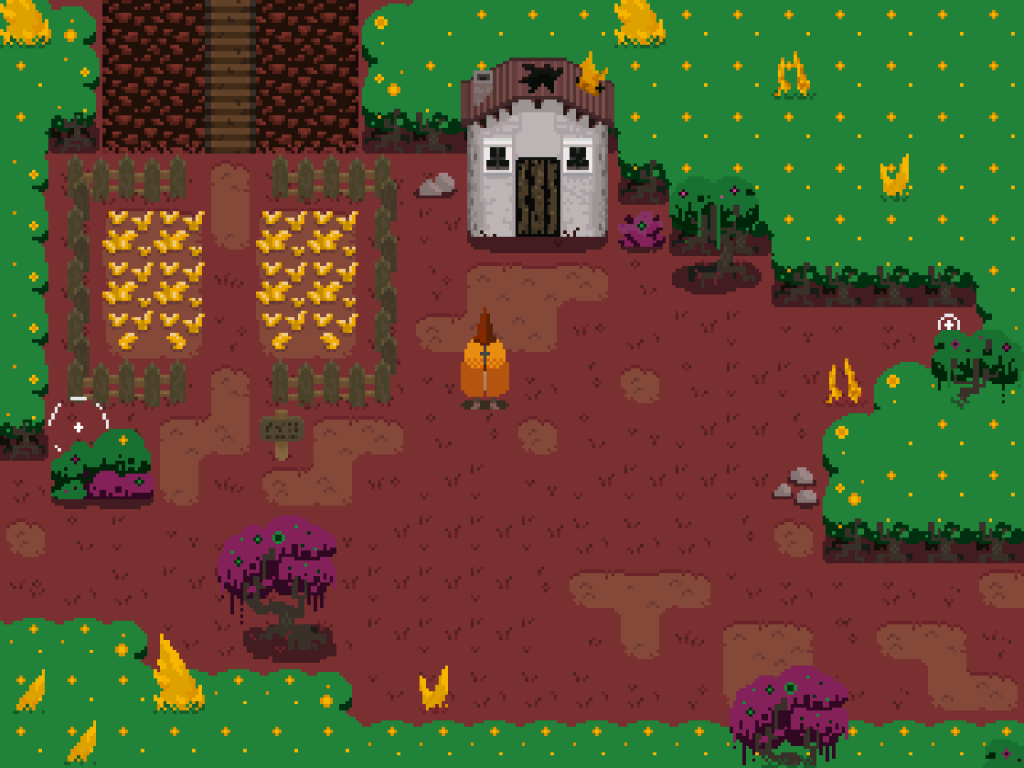
what do the environment and decorations outside of a home tell you about the people that once lived there?
how can the story be delivered through the visuals of a game?
Video games are an artistic medium with the unique opportunity to deliver aspects of their world and story through gameplay.
Despite this, many games (mostly AAA titles, in my experience) relegate these elements exclusively to dialogue and cutscenes.
In my opinion, this is lazy.
With that in mind, I hope to keep dialogue relatively sparse and esoteric, to encourage interpretation, and keep players guessing.
I’ll also try to avoid overwhelming players with walls of dialogue, and make most of it optional. If players want to learn more about the world, they can. If not, they can avoid these extra conversations.
Conclusions
I love the JRPG genre, but I think its conventions are overused, and its potential is somewhat unexplored.
Through Deep Graves, I hope to craft an immersive experience that rewards player intuition with visually stimulating, carefully designed combat, and a unique world to explore.
I hope to complete this project before (or shortly after) I graduate from college, and I plan on releasing Deep Graves for free once it’s finished.
Here’s another link to my rpgmaker.net profile, where you can expect to find the game, once it’s complete.
And as always, thanks for reading.
Sources
- Final Fantasy VI: Sketch Glitch. (2011, September 23). [Screenshot]. LP Archive. https://lparchive.org/Breaking-Final-Fantasy-VI/Update%2008
- videogamedunkey. (2017, December 14). Xenoblade 2 : JRPG Chronicles [Video]. YouTube. https://www.youtube.com/watch?v=fiVZMxf4E2Q&feature=youtu.be
Disclaimer
All information in these posts is my own words, unless explicitly stated otherwise. None of this information is quoted, nor paraphrased, unless explicitly stated otherwise. Any similarities between my own words, and the informative sources/hyperlinks provided is purely coincidental, unless explicitly stated otherwise.
In any case where I am using someone else’s words (or imagery), the source will be cited internally, with a link to that source provided either within the internal citation, at the end of the post under “Sources,” or both.

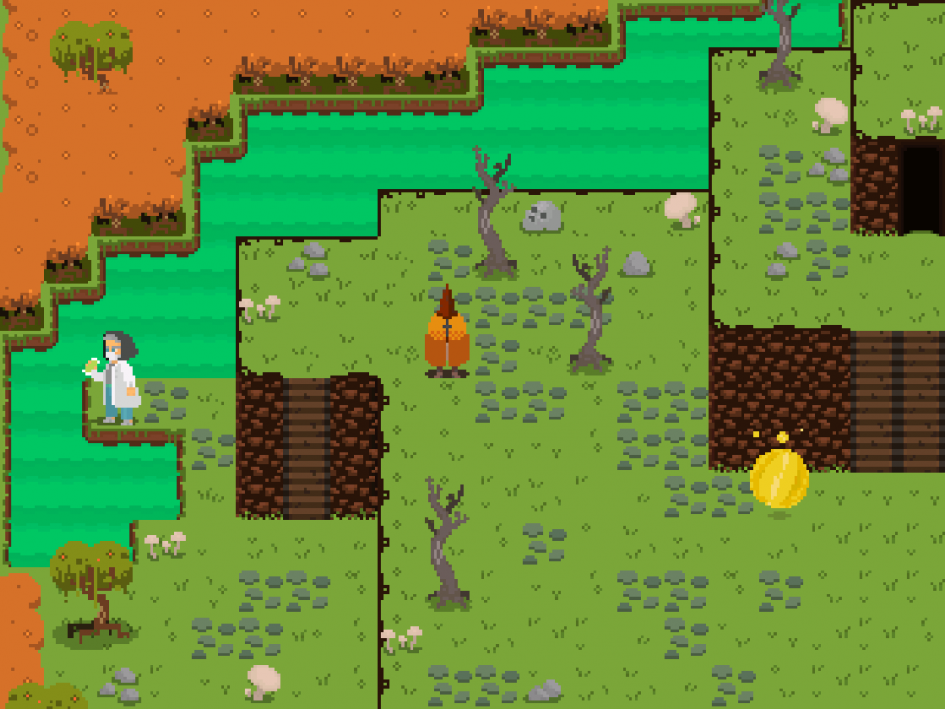
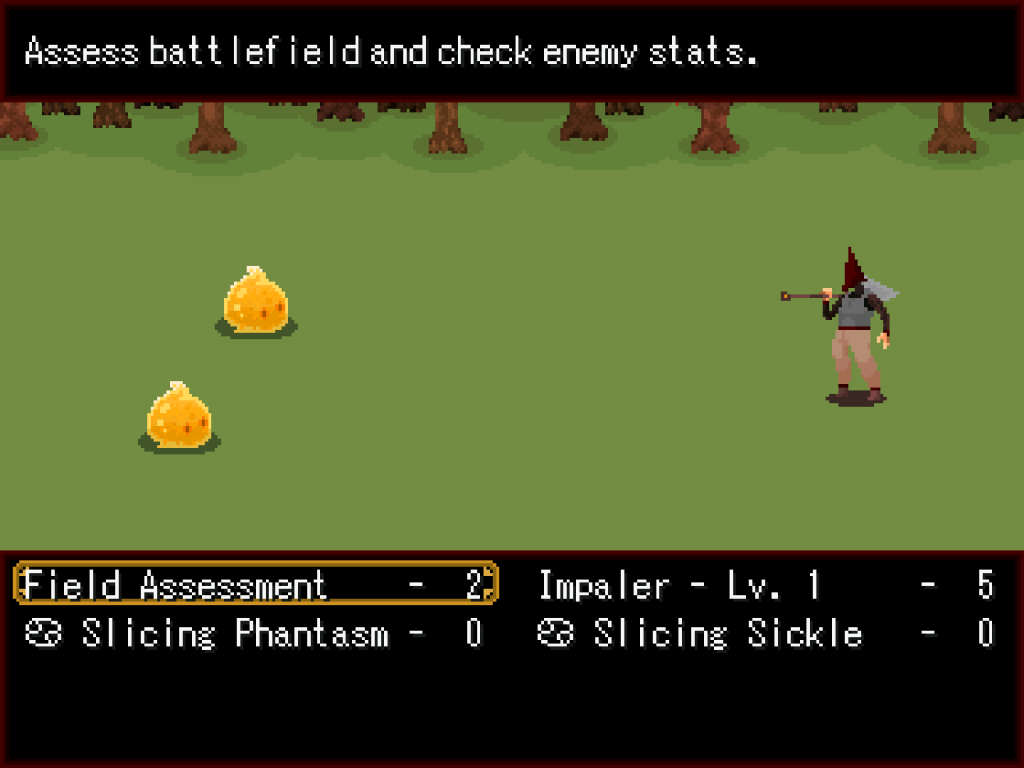
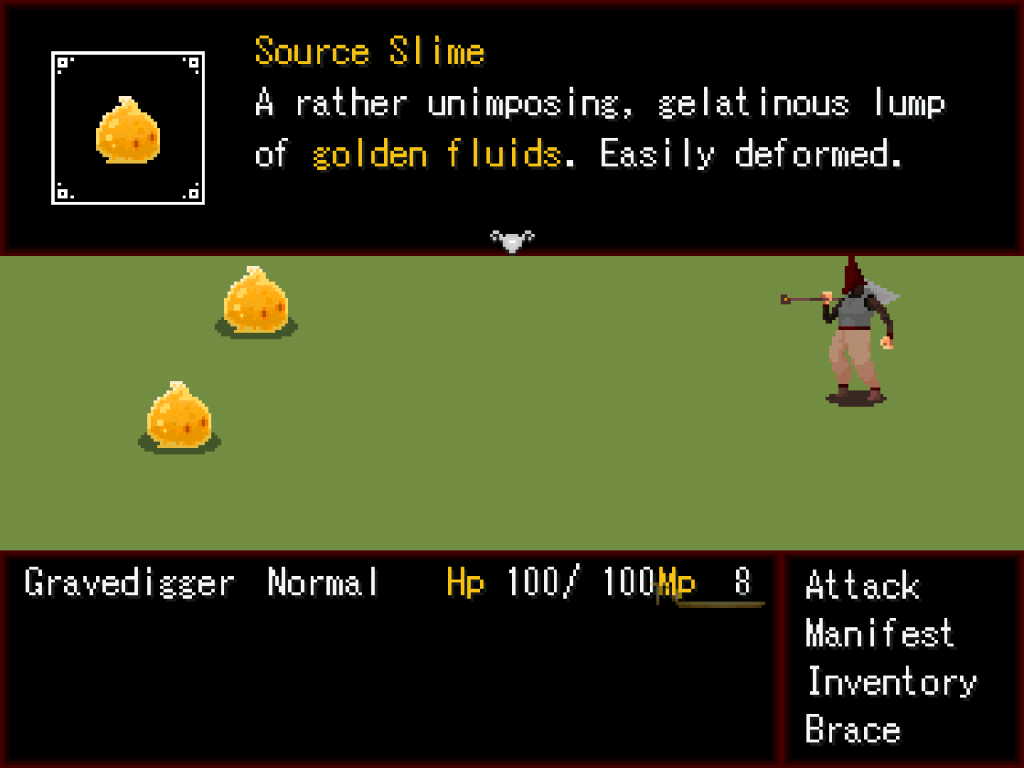
April 3, 2021 at 5:47 am
You are very critical of RPG games, and I think that is benefiting you a lot. So you can make a unique RPG game with an amazing experience from start to finish.
Great job. I think you should continue this blog after the class ends because you have a lot to say and show. As well as document the progress of your game.
April 3, 2021 at 7:36 pm
Your words of encouragement mean a lot, man. Thank you.
I have been considering continuing this blog after the class ends. At the very least, I’ll be making sure the blog doesn’t disappear alongside my UWW email/account.
That said, I’m not sure how active I’ll be on this blog throughout the game’s development.
For one, I’m hesitant to share details related to my game, since I want to avoid spoiling the experience for anyone interested in playing it once it’s done.
For another, it takes me a while to write these blog posts – this one took around 4 hours. I think that time would be better spent working on Deep Graves, as opposed to just talking about it.
In any case, I appreciate your support, and interest in seeing what I have to say. Maybe I’ll make an effort to update this blog on occasion, once the semester is over.
October 31, 2025 at 6:41 am
In plants vs brainrots, developing a solid strategy is crucial for defending your garden against waves of pesky brainrots. Start by selecting seeds that offer strong offensive capabilities and are cost-effective to create a balanced lineup. As your plants grow, make sure to upgrade them regularly to enhance their power and defensive capabilities.
Additionally, experiment with different combinations of plants to discover the most effective strategies. Some plants may provide strong attacks, while others can offer defense or healing abilities. Keep an eye on the brainrot attacks to adjust your strategy as needed, ensuring you’re always prepared to face tougher foes. Finally, take advantage of hidden upgrades and secrets to optimize your garden’s potential, making it easier to overcome the challenges presented in the game.
April 5, 2021 at 4:07 am
I agree with Mohammed, you should definitely keep going with this blog once our class is over! I know it may be hard at times to keep a constant update on your game, but it would be interesting to see where your game is in the next upcoming months.
Personally, I love to play RPGs but I have no experience with the creation of them, so I enjoy seeing and reading about your process of creating your own game. You put a lot into your work and your game and it amazes me! Even though you haven’t give us a full in-depth story line, it still interests me and I can’t wait to learn more about it in the future. Overall, I really enjoy your posts about game development and I can’t wait to read more!
April 5, 2021 at 7:29 am
Again, thank you. Your kind words mean a lot.
I’d definitely love to talk more about my game, but I want to avoid oversharing, so I have to be careful. Like I said in the post, I want to avoid spoiling elements of gameplay, and the story – I want to release the game such that most players will play it more or less blind, for the first time.
That said, I think there are other aspects of the content that I could share, such as progress on art assets and animations. Certain visual elements aren’t necessarily spoilers, so I think I could get away with sharing some of those things.
April 6, 2021 at 7:26 pm
Hey! Great to finally see the game you’re working on. So far, I really like what I’m seeing from it. The art direction is great, as I’m a sucker for pixel art/sprite art. The world of your game feels mysterious and exciting. As far as the criticisms for JRPGs go, I can see where you’re coming from. There are a good chunk of them that don’t do anything to innovate and just copy-paste from other games.
I’m developing a game too, but it is definitely still very early on in the conceptual stages. The main games I take inspiration from are Fire Emblem, Kingdom Hearts, and somewhat Monster Hunter.
April 6, 2021 at 7:37 pm
Thank you! I’m glad you enjoy the (admittedly small) snippet of content I was able to show for this post. I’ve been too busy to work on the game much lately, but the motivation to work on it has been steadily building.
Hopefully I’ll be able to continue writing/developing the story this week.
JRPGs are definitely an interesting, but underused genre. I love Final Fantasy, but there’s a lot of untapped creative potential in the genre. Persona 5 is a good example of a non-traditional setting done well in a JRPG.
And hey, great to hear you’re developing a game as well. I think Deep Graves spent almost exactly 2 full years in the earliest conceptual stages. I’m still in the early stages of development, but I’ve begun to pin down more concrete ideas related to the gameplay and story.
I’m looking forward to being more or less done with the story, so I can start creating visual assets without having to worry about things changing quite as drastically.
April 6, 2021 at 10:46 pm
Hey! This is actually awesome work, I love the bit style and appreciate a lot of the mechanics you’ve mentioned towards friendly player UI.
April 7, 2021 at 12:17 am
Thanks man, I really appreciate it.
Yeah, I’m hoping to make this a challenging JRPG that’s playable by all people, whether they experienced with the genre (or gaming in general) or not.
I think good game design makes virtually any game playable when done correctly, regardless of individual player experience.
April 7, 2021 at 2:35 pm
This is another great post- your blog is definitely one of my favorites and I make sure to visit every week because your posts are so interesting!
April 7, 2021 at 7:20 pm
Thanks so much! I definitely end up spending a lot more time on these blog posts than I initially expect, so I’m glad to hear the content is worth the effort.
July 21, 2021 at 3:01 am
such us a good games, thanks for sharing
June 7, 2022 at 8:22 am
The information you shared is very helpful, thank you for sharing.
February 14, 2023 at 10:06 am
great concept and really cool art man
keep up the good work
March 8, 2023 at 5:55 am
Good job man, I’ll give it a shot
August 21, 2023 at 7:11 am
Thanks for the amazing information admin. its very useful to all.
August 21, 2023 at 7:13 am
Wow, it’s a great article, I expect more posts like this.
November 10, 2023 at 1:50 am
It looks so great, thanks for sharing
February 7, 2024 at 12:11 pm
Your post is quite clear and i can tell you know a lot about the subject
April 1, 2024 at 7:00 am
PelisPlus is your go-to destination for an extensive collection of movies and TV shows, offering a diverse range of genres to suit every taste. Stream your favorite content effortlessly and enjoy high-quality viewing experiences anytime, anywhere. Discover new releases, timeless classics, and binge-worthy series all in one convenient platform. Join PelisPlus today and elevate your entertainment experience to new heights.
May 20, 2024 at 7:12 am
No Doubt this is really very good article for SEM for effective on hotel strategies.
PPP Haryana
Thanks
May 27, 2024 at 6:05 pm
Thanks For Share This Blog Download Minecraft Now !!
August 13, 2024 at 3:40 pm
Many students seeking Scholarship in South Africa and there search is now ended as Online platforms are providing this opportunity
January 29, 2025 at 5:05 am
Nice work. It’s a very cool game project. slope
February 12, 2025 at 2:35 pm
A platform that supports multiple languages, making it accessible to global users.
March 24, 2025 at 2:48 am
One of the most addictive browser games—play DragonSweeper and experience the thrill of strategy and adventure!
March 27, 2025 at 7:21 am
i like this game project, but if given the choice i would still rather play the fnf rhythm game
April 16, 2025 at 4:46 am
This is a very well-written and informative introduction to Deep Graves.
May 7, 2025 at 3:46 am
Every ride has its own special abilities, and Escape Road there are more than 90 vehicles to unlock.
May 19, 2025 at 3:28 am
I also used to play around with RPG Maker 2003, so I understand the feeling of things changing constantly in the early stages of development like you said. Looking at your DEEP GRAVES project, I see a lot of potential, both mysterious and engaging. The feeling of creating each smooth, logical game section is like playing Sprunki Retake — when everything fits together, it feels so “satisfying”!
June 11, 2025 at 8:58 am
Very thoughtful and thoughtful post – you are creating a JRPG world full of personality and creativity! Playing level devil will definitely be interested in the unique designs.
June 11, 2025 at 10:19 am
Explore trending topics and expert insights with Doms2cents. Our blog offers real opinions, news analysis, and tips to navigate today’s fast-paced world. doms2cents
June 14, 2025 at 9:12 am
When you finally a tricky level in stickman hook you’re been stuck on, it feels incredibly rewarding. You cant help but simple and go for the next challenge
June 18, 2025 at 6:00 pm
Winbox download is crucial for anyone managing MikroTik routers. It provides a full-featured interface to configure and monitor network devices. Downloadable directly from MikroTik’s site, Winbox ensures you’re using the latest version with enhanced security and performance updates. Winbox Download
July 8, 2025 at 9:50 am
DEEP GRAVES is a dark, atmospheric action-adventure game where players explore cursed ruins, forgotten catacombs, slither io and decaying civilizations beneath the earth
July 10, 2025 at 1:01 am
I’m grateful you shared this piece. It offered a fresh perspective I hadn’t considered.
July 30, 2025 at 8:43 am
This game is very amazing and adventurous Bible Chat App
August 1, 2025 at 5:08 am
Despite this potential, many games—particularly AAA titles—fall back on traditional, often passive storytelling methods. They lean heavily on exposition, dialogue, and cutscenes, rather than allowing the player to discover the world organically. In my view, this approach is not only overused but also creatively lazy.
peryourhealth com
August 5, 2025 at 9:13 am
Thanks for sharing the post!
August 5, 2025 at 11:16 am
PayByPlate MA makes commuting in Massachusetts a whole lot easier trust me, I’ve used it on everything from weekend road trips to daily work commutes. I walked you through the login requirements for PayByPlate MA, what it is, why it matters, and how to set it up for hassle-free toll payment.
paybyplatema
August 9, 2025 at 6:31 am
The askMID service allows you to confirm if your vehicle is currently showing as insured on the Motor Insurance Database.
August 14, 2025 at 2:52 am
Join the Snow Rider 3D community and compete for the top spot! Show off your skills, share your high scores, and see who can conquer the toughest courses. The race is on—download now!
August 17, 2025 at 2:52 pm
Are you familiar with Clash Royale? Royaledle tests your mental faculties by making ingenious recommendations for each card. Just wit, technique, and that “aha!” moment when you do it right—no guessing. Ideal for gamers that enjoy puzzles just as much as combat!
August 27, 2025 at 8:28 am
I wanted to try and tap into something unique with my BLOODMONEY!
August 29, 2025 at 7:31 am
Overall, the impact of technology on modern greenssolarsolutions society is profound and multifaceted.
September 5, 2025 at 10:31 am
I’ll walk you through why HCTRA is a game-changer for Houston commuters. From mastering your HCTRA customer login to navigating toll roads like Sam Houston Tollway, we’ve covered it all: HCTRA Login, Sign Up Procedure, EZ TAG Application, Login Problems, Account Management, Toll Violations, Payment Options, Regional Transportation, and About HCTRA.
hctra org
September 6, 2025 at 1:44 am
The important reason is that I want to avoid revealing certain elements of my story before anyone has a chance to play the game and experience it for themselves.
spanish dictionary
September 8, 2025 at 4:38 am
Thank you for sharing your positive comments! Your enthusiasm and experience really motivate new participants, helping them feel more clearly the joy of the basket random game.
September 10, 2025 at 6:18 pm
Thank you for sharing this wonderful article! Very helpful and inspiring. Play game octordle free.
September 18, 2025 at 7:37 am
Thanks for your sharing, this guide really help me a lot, especially when i play BloodMoney 2 game, i use a lot of skills retention by you.
September 21, 2025 at 4:56 pm
Aadhaar is a 12-digit unique identification number issued to residents of India by the UIDAI. It is based on an individual’s biometric and demographic data and serves as a proof of identity and address.
September 25, 2025 at 12:55 pm
Companies gain resilience by upgrading jokerstash.at credit.
September 26, 2025 at 1:19 pm
This introduction to Deep Graves builds so much trust already — it’s inspiring to see the thoughtful balance between creative ambition and restraint, especially in the decision to hold back story and prioritize player discovery.Dive into LoveMoney LoveMoney, a one-of-a-kind clicker RPG where chasing $25,000 forces you to confront tough ethical dilemmas. Start playing LoveMoney online for free today!
November 1, 2025 at 3:37 pm
That’s awesome! The “Dark Souls” inspiration is a fantastic choice; I can already picture the atmosphere. It’s so encouraging to see developers putting so much effort into even early-stage projects. Good luck with the development – I’ll be keeping an eye out for updates!
November 3, 2025 at 4:55 am
This blog information is very amazing e-zpassct com
November 6, 2025 at 1:32 am
In Friday Night Funkin’ fnf , the goal is simple: press the arrow keys to the beat, help Boyfriend out-sing his opponents, and secure his happy ending with his beloved.
November 7, 2025 at 11:37 am
Your posts are like little gems-bright, bold, and always worth the scroll. Thanks for sharing! Nelnet
November 15, 2025 at 1:39 am
Reading through the development journey of Deep Graves made me appreciate how much the author thinks critically about genre conventions and actively challenges them. The intuitive enemy design and emphasis on storytelling through visuals are standout choices—it’s refreshing to see gameplay be a driving force for narrative rather than lengthy exposition. The post’s honest discussion of JRPG flaws shows humility and a desire for innovation. If only more projects mixed creative ambitions with tools like the GEMPIX2 Image Tool for visual prototyping, I wonder how many unique game worlds could spring up from RPG Maker and beyond.
November 16, 2025 at 11:55 am
Explore a wide variety of birthday dress for girls. Visit India’s top online shopping destination for women’s affordable clothing. birthday dress for girls
November 25, 2025 at 9:08 pm
Drawing from the tight, paired rhythm of names like “Dark Souls,” my game’s title was shaped to feel just as sharp and memorable, reflecting the same kind of atmospheric depth that first pushed me into development; and just like how discovering new tools expands a creator’s world, exploring platforms such as vedu app download reminded me how the right gateway can open up entirely new experiences for players and makers alike
December 1, 2025 at 1:42 am
This deep dive into RPG design is amazing! As a student, I totally feel this — our school blocks Steam, itch.io, and pretty much every indie game community, so we can’t access anything. Then my roommate found this lifesaver called Proxy Game Site, and boom — all the blocked game sites unlocked with one click.
Now our whole dorm uses it to follow game updates and download indie titles (especially those RPG Maker gems). We even chill with a quick game during breaks. Highly recommend it to anyone stuck behind a campus network wall!
Just… you know, play in moderation — schoolwork still comes first 🙂
December 2, 2025 at 6:04 am
I’m excited to see the development of Deep Graves! RPG Maker 2003 has such charm, and it sounds like you’re creating something unique. If you’re into fun games, check out Suika Games for a refreshing puzzle experience!
December 2, 2025 at 6:05 am
I’m really intrigued by the concept of Deep Graves! It’s always exciting to see RPG Maker 2003 in action. While waiting for updates, I also recommend checking out スイカゲーム for a fun puzzle experience!
December 2, 2025 at 7:12 am
monkey mart: Build your first monkey supermarket → Expand your shelves with new products → Attract more customers to your mart → Become the busiest shop in the jungle.
December 5, 2025 at 4:07 am
The game’s interface is clean and intuitive. The orbit beats glowing trails, smooth movements, and clear visual cues make it easy to follow the rhythm and enjoy the game without feeling overwhelmed or distracted.
December 13, 2025 at 7:10 am
This is a fascinating example of how urban architecture can be designed to support and restore marine ecosystems. Very innovative!
December 18, 2025 at 8:38 am
Game development is indeed challenging yet rewarding. I’ve faced similar challenges in design, especially with decision-making and choices. Using a yes or no wheel has helped streamline this process, making development more fun and creative.
December 24, 2025 at 6:16 am
Solid advice here. Another thing that helped me was staying organized throughout the process.